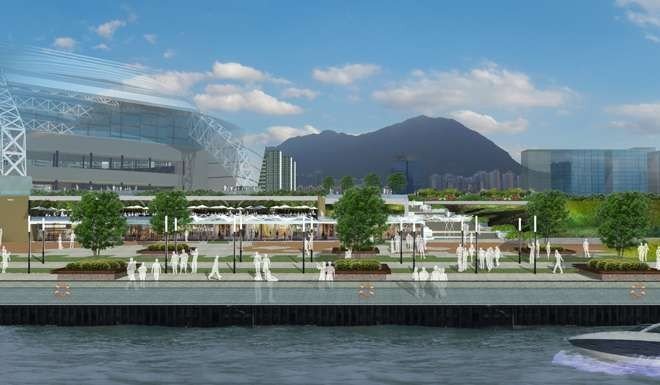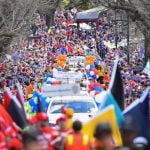It can be difficult to get an audience with the Hong Kong government’s sporting powerbrokers.
The only time I’ve met Yeung Tak-keung, our first commissioner for sports who was appointed in January, was some 18,000 kilometres away as we watched Tiffany Chan Tsz-ching in action at the Rio Olympics golf course.
So it was refreshing that a senior official in Yeung’s department, the Home Affairs Bureau, briefed members of the sports industry this week on the latest state of plans for Kai Tak Sports Park.
A quick recap if you’ve not been paying attention: 18 years after Kai Tak Airport closed, the prime harbourfront land on Kowloon Bay is still essentially waste ground.
Plans for the sports park, which will have a 50,000-seat stadium with retractable roof, indoor stadium and a public community sports ground were mooted many years ago, with little progress made since.

But in July 2015, after a protracted battle, Legco’s finance committee finally signed offon HK$62.7 million in pre-construction funds, which have been funnelled to an “army” of consultants (the HAB official’s description).
KPMG is one of the primary advisers and we saw a presentation on the latest developments at its office in Central.
Construction of Kai Tak complex top of Hong Kong’s new sports chief’s priorities
A lengthy environmental impact assessment has come to an end, with noise the main concern. Given that local residents near Hong Kong Stadium even had the gall tocomplain about a concert to raise money for the children of Sars victims back in the day, we shouldn’t be surprised.
In a city where there’s constant jackhammering and car-horn blasting, god forbid anyone should hear some occasional cheers or boos or music.
The government’s genius plan in 1994 to solve Hong Kong Stadium’s ‘noise problem’ was to propose that concert-goers be issued applause-suppressing gloves, the kind of visionary thinking that explains why Kai Tak is taking so long.
Kai Tak will have a retractable roof, so residents of tower blocks to be constructed nearby (of course there is a property development component) should have delicate eardrums protected.

A key challenge and obvious major concern for officials is the pitch. Since the Hong Kong Stadium surface has been an absolute embarrassment ever since a ball was first kicked on it, that’s no surprise.
Several divisions of that army of consultants are tasked with turf issues; limiting the stadium to 30 events a year, as is the pathetic case at Hong Kong Stadium, is not an option.
The likely solution will be to have fields of turf growing on the mainland, to be shipped in and installed at the stadium as required.
Plans for the indoor stadium are still evolving. Sporting chiefs from badminton, volleyball and the like scoffed at initial proposals that it have a mere 4,000 seats; the current proposal is for 7,000 with 10,000 being considered.
Build it and they’ll come: Bigger badminton venue at Kai Tak Sports Park will attract international events to Hong Kong
By comparison, Singapore’s National Indoor Stadium at their Sports Hub can hold 12,000. Officials don’t want a ‘Coliseum situation’, referring to the Hung Hom venue that was envisaged as a major indoor sports centre but is used far more often for things like Cantopop concerts.
However many seats there are, they will be retractable, so that on non-event days an area the size of 30-40 badminton courts will be available for community sport.

Thankfully, a 57,000 square metre shopping mall has been included in the indoor arena plans, because Hong Kong desperately needs another mall.
There will also be a ‘dining cove’ of waterfront restaurants at the development – though it was a little troubling to hear that planners only considered incorporating a harbourfront walkway after feedback from survey respondents.
‘I want the runway’ – Lawrence Yu urges government to build dedicated Formula E track on Kai Tak site
It will be impossible to satisfy everyone. Why the stadium is only going to have 50,000 seats is a mystery to me, and even at the presentation there were some groans.
Those in the cricket community, to take one example, will be depressed that there is no provision for Hong Kong’s highest world-ranked team sport in the plans.
Once Legco gets back to work in November, attempts to get the finance committee to approve plans will begin.
The HAB hopes funding approval can be secured by the second quarter of 2017, tender invites can be sent out in July or August, and building can begin in 2018, to be finished by 2022. These are optimistic, best-case scenario forecasts.
The plans look promising: let’s hope it doesn’t take another decade for them to get Legco approval.
[SOURCE:-South China Morning Post]







